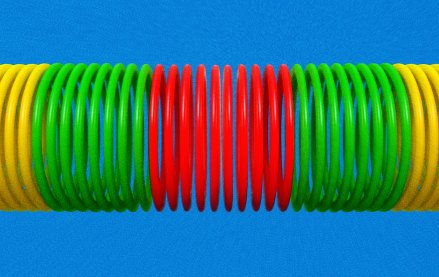Nielsen enhances its cross-platform offering with attention metrics from Adelaide

As a Digiday+ member, you were able to access this article early through the Digiday+ Story Preview email. See other exclusives or manage your account.This article was provided as an exclusive preview for Digiday+ members, who were able to access it early. Check out the other features included with Digiday+ to help you stay ahead
Continuing its goodwill tour to enhance measurement offerings for publishers, agencies and brands, Nielsen has signed a deal with measurement firm Adelaide to incorporate the latter’s attention metrics into the former’s outcomes measurement offering in Nielsen ONE.
In what Nielsen is calling a “strategic collaboration,” Digiday has learned that Adelaide’s AU attention metric is being folded into Nielsen ONE to help customers get closer to determining outcomes — the measurement rallying cry of 2025. It’s the first major audience platform to incorporate Adelaide into its offering, in this case Nielsen’s cross-platform measurement service.
It’s all about being able to better understand campaign effectiveness across reach and attention measurement. Clients want it to know where to invest their marketing dollars, agencies want it to show their clients the choices made are effective, and publishers want it to prove they’re the right destination for those marketing dollars.
Nielsen has been on a crusade of sorts to widen its offerings to its broad client base, and with Nielsen ONE’s outcomes measurement offering, it continues to add partners that can bring some answers to their needs. In August, Nielsen incorporated RealEyes data into the outcomes offering in order to optimize creative direction in marketing efforts.
Nichole Henderson, svp of global outcomes product at Nielsen, said the idea is to create measurement insights that didn’t exist before. “Our goals are to be able to comprehensively measure a campaign’s performance across all aspects, components, impact — and really help our clients understand the reasons and the variables driving that performance,” she said, adding that the measurement giant is in discussions with other measurement providers.
For its part, Adelaide sees this as a Reese’s peanut butter cup moment for media measurement. “This is the first time that advertisers are able to understand the quality of the reach that Nielsen is measuring,” said Marc Guldimann, Adelaide’s founder and CEO. ”We’re almost the perfect yin to their yang — Nielsen measures who you reach, and we measure what is the quality of that reach.”
To that end, Nielsen and Adelaide have crafted two types of indexes. The first, an efficiency index, measures attention levels on ads that have already run, offering a score of sorts of their success or lack thereof across any media. The second, the marginal efficiency index, offers a way to predict effectiveness and attention by combining the AU metric with Nielsen’s reach data.
“This allows them to be able to see not only what audiences they’re reaching, but the quality of the impression that they’re reaching them on,” added Tyler DeTour, svp of sales for Adelaide.
Longtime video sales executive Peter Naylor, who this year joined Adelaide’s board of advisors, (which also includes ad-tech investor Joe Zawadzki and media agency legend Irwin Gotlieb), took the longview on the collaboration. As he sees it, the reality that there’s more content out there that may be of dubious quality necessitates better ways to parse through it.
“In the age of AI slop and MFA sites, this is something that you can point to and say, we’re doing a good job to make sure your media dollars are going to places that will work the hardest for you, and try to keep you out of harm’s way,” said Naylor. “When every dollar counts, and there’s so many forces pulling at those dollars, this is a metric that is all about the heart of it all: moving the hearts and minds of consumers with well conceived media plans.”
Media agencies will take all the help they can get, given the content realities that Naylor spelled out.
“For too long, we’ve navigated a fragmented landscape, and this solution brings much-needed simplicity and connectivity, helping to unify disparate data points. We’ve consistently advocated for reframing media value beyond traditional CPMs, pushing for greater attention and engagement metrics,” said Nicolas Grand, executive director, research & investment analytics at WPP Media, in an emailed comment.
More in Media Buying

Ad Tech Briefing: Big Tech won 2025 (even when it lost)
How AI, commerce media and scale reshaped ad tech in 2025 to the benefit of Big Tech.

How brands shifted marketing and media strategies through year of tariffs
Marketers share how they navigated the maze of tariffs and regulatory changes this year.

Media Buying Briefing: Omnicom Media execs begin their pitch outreach ahead of an expected new-business glut
Omnicom’s acquisition of IPG is only a few weeks old, but its combined offer to the market will soon be put to the test as it meets with consultants.








